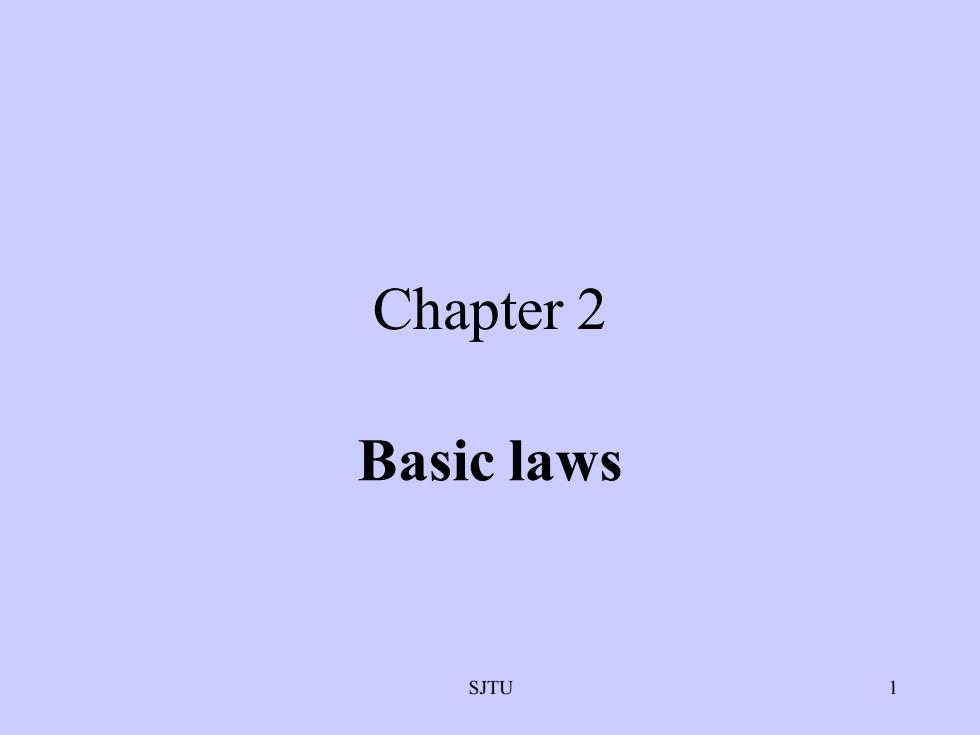
Chapter 2Basic lawsSJTU
SJTU 1 Chapter 2 Basic laws
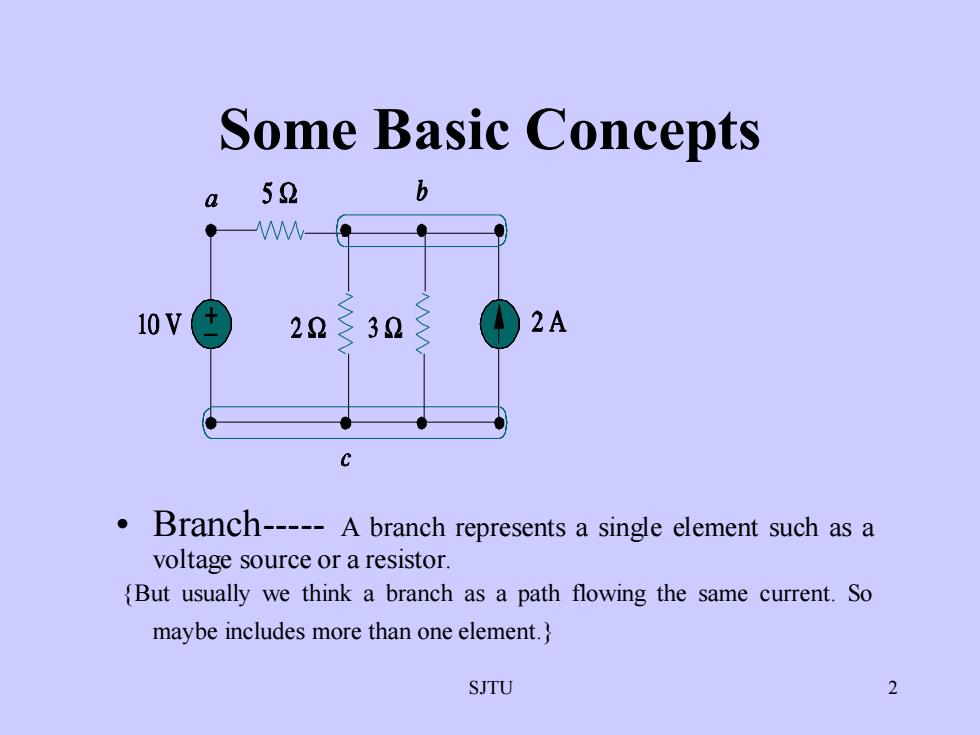
SomeBasic Conceptsb52a2A10V2232. Branch----- A branch represents a single element such as avoltage source or a resistor.(But usually we think a branch as a path flowing the same current. Somaybe includes more than oneelement.2SJTU
SJTU 2 Some Basic Concepts • Branch- A branch represents a single element such as a voltage source or a resistor. {But usually we think a branch as a path flowing the same current. So maybe includes more than one element.}
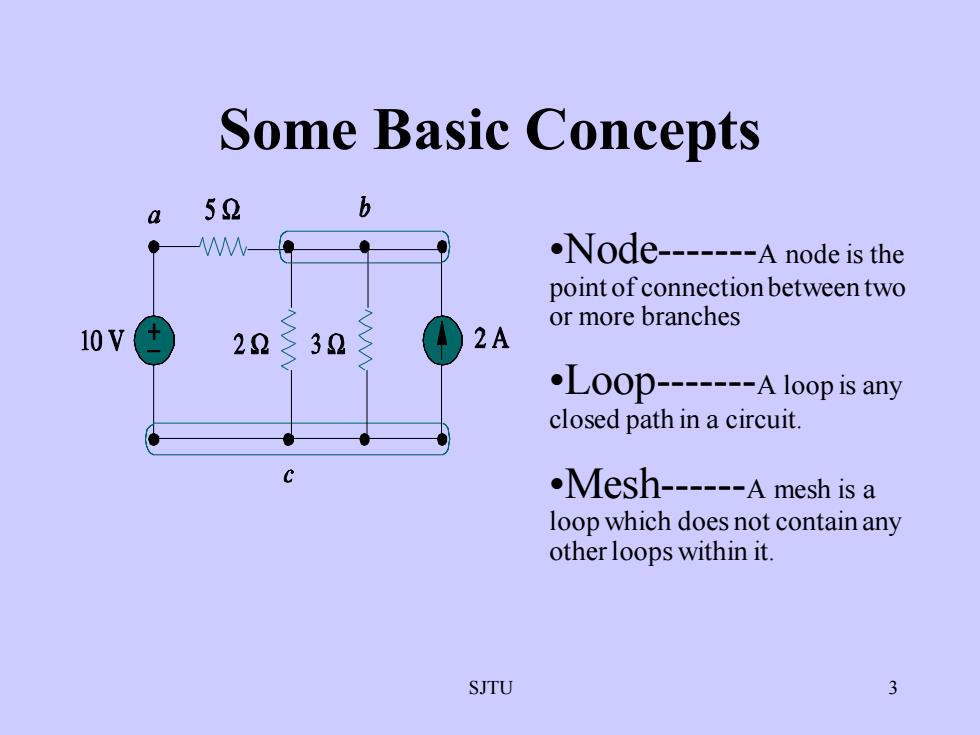
Some Basic Conceptsb52a.Node-------A node is thepointof connection between twoormorebranches2A10 V2232·Loop0--.----Aloopis anyclosed path in a circuit.·Mesh------A mesh is aloop which does not contain anyotherloops within it3SJTU
SJTU 3 •Node-A node is the point of connection between two or more branches •Loop-A loop is any closed path in a circuit. •Mesh-A mesh is a loop which does not contain any other loops within it. Some Basic Concepts
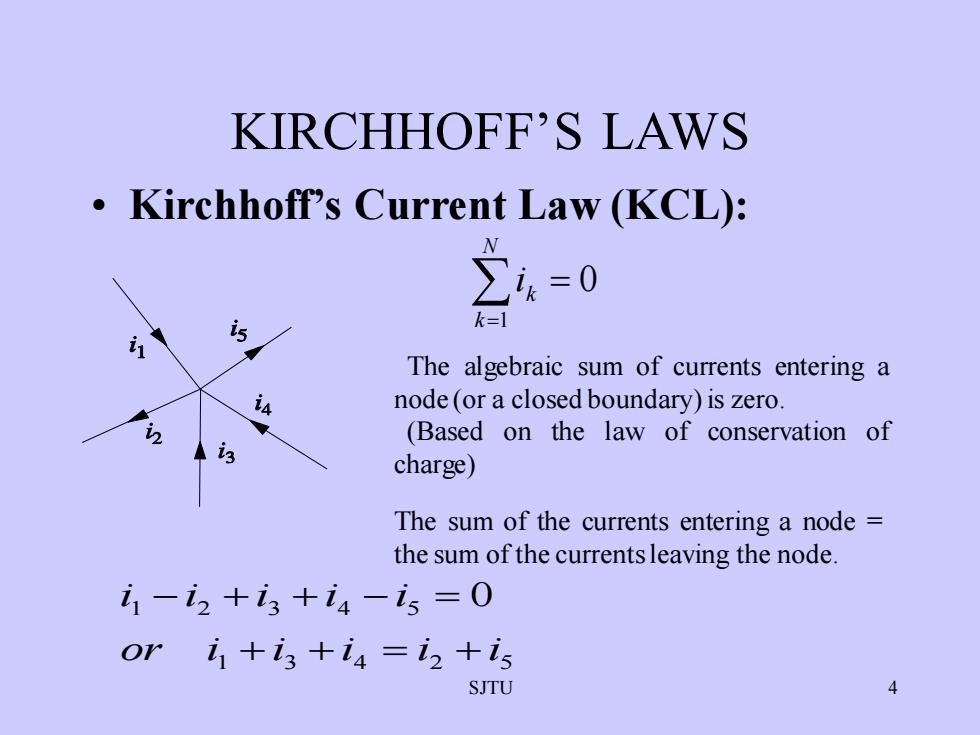
KIRCHHOFF'S LAWS Kirchhoff'sCurrentLaw(KCL):NZi=0k-1isWThe algebraic sum of currents entering anode(oraclosedboundary)iszero.(Based on the law of conservation ofi3charge)The sum of the currents entering a node =the sum ofthe currentsleaving the node-iz+i +i-is =0or i+is+i=iz+isSJTU
SJTU 4 KIRCHHOFF’S LAWS • Kirchhoff’s Current Law (KCL): The algebraic sum of currents entering a node (or a closed boundary)is zero. (Based on the law of conservation of charge) The sum of the currents entering a node = the sum of the currentsleaving the node. = = N k k i 1 0 1 3 4 2 5 1 2 3 4 5 0 or i i i i i i i i i i + + = + − + + − =
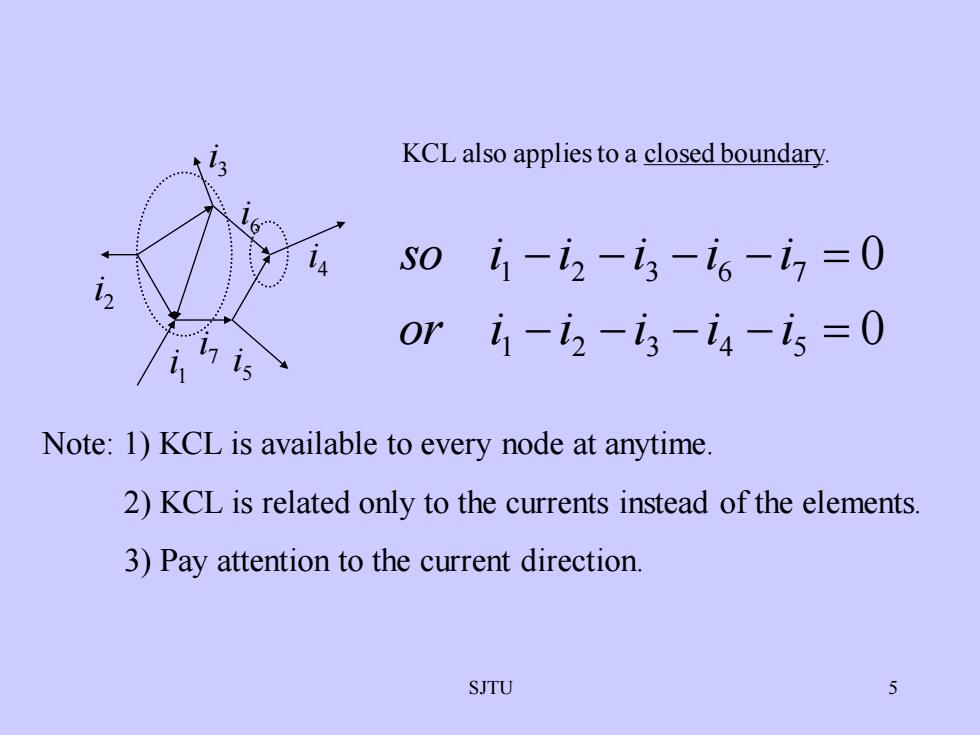
KCL also appliestoa closed boundaryso i-iz-is-ic-i =OOr i -iz -i -i4-is =ONote: 1)KCL is available to every node at anytime2)KCL is related only to the currents instead of the elements3) Pay attention to the current directionSJTU5
SJTU 5 KCL also applies to a closed boundary. 1 i 2 i 3 i 4 i 5 i 0 0 1 2 3 4 5 1 2 3 6 7 − − − − = − − − − = or i i i i i so i i i i i 7 i 6 i Note: 1) KCL is available to every node at anytime. 2) KCL is related only to the currents instead of the elements. 3) Pay attention to the current direction